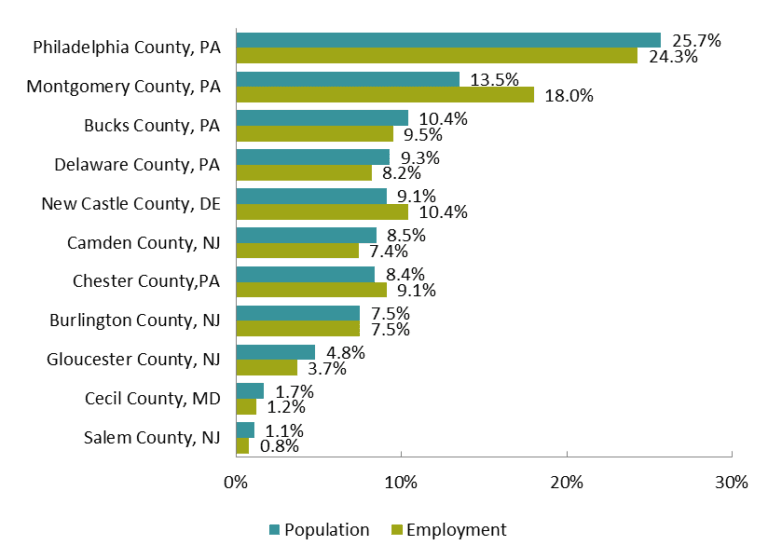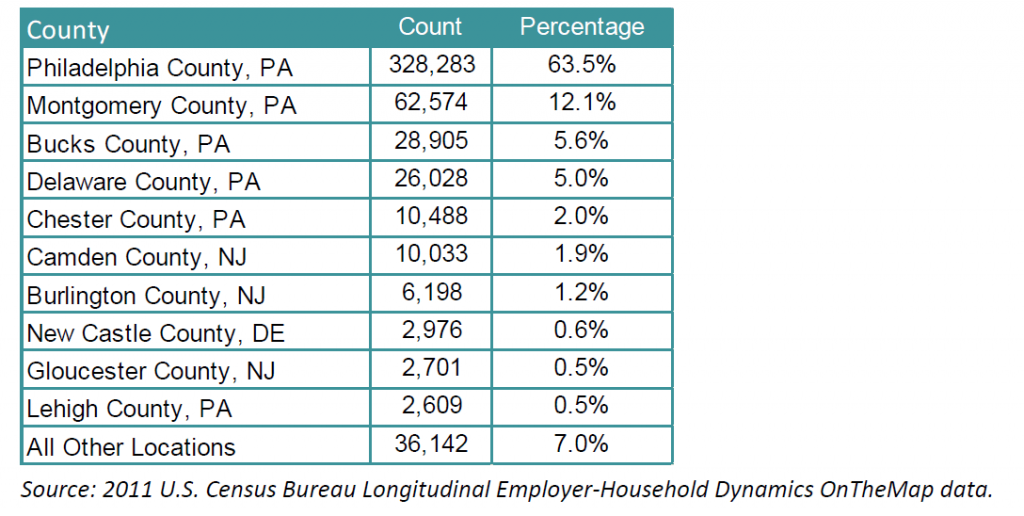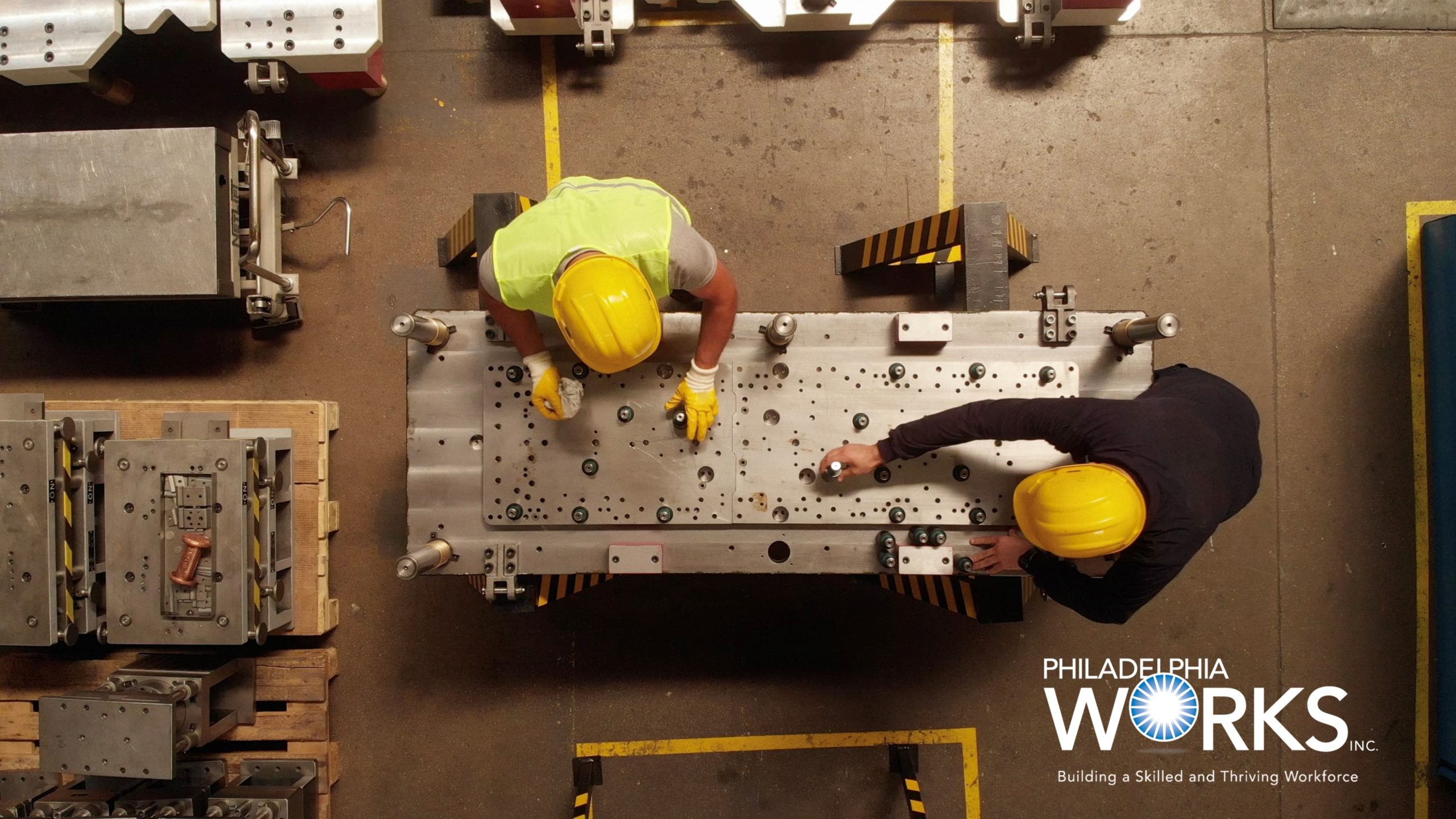Philadelphia and the Region
Philadelphia is located on the Northeast corridor between Washington D.C. and New York City, and belongs to a larger metropolitan statistical area composed of eleven counties in four states (Philadelphia-Camden-Wilmington, PA-NJ-DE-MD MSA). The region’s public transit and road networks provide convenient and efficient connections between Philadelphia and the surrounding area, allowing Philadelphia-based businesses to draw from a strong labor pool. The growing “eds and meds” (higher education and medicine) institutions in the city have become principal drivers of the local employment.
Employment and Population in the Region
The region entered recession later than the U.S. and did not lose as many jobs as the nationwide. Since the Great Recession, Philadelphia had higher unemployment rates than the MSA but started gaining jobs earlier than the MSA did. Visit the Fast Fact to read more about the employment trends in Philadelphia and the region.
As the county with the biggest population, Philadelphia also has the concentration of jobs in the region. In 2013, employment in Philadelphia accounted for 24.3 percent of the total jobs in the MSA, followed by Montgomery County, PA at 18 percent.
EMPLOYMENT AND POPULATION IN THE REGION BY COUNTY

Source: 2013 Population Estimate, U.S. Census Bureau; 2013 Quarterly Census of Employment and Wages.
Where Philadelphians Work and Where Workers Employed in Philadelphia Live [1]
Counties in the region are closely connected by the flows of workers. 63.5 percent of Philadelphians worked in the city; 93 percent of them were employed within the Metropolitan Statistical Area and Lehigh County, PA. 12.1 percent of Philadelphians traveled to Montgomery County, PA to work. Of all workers in Philadelphia, 52.7 percent of them came from the city. Workers came from the Metropolitan Statistical Area and Lehigh County, PA contributed 92 percent of all people working in the city. 10.4 percent of individuals employed in Philadelphia commuted from Montgomery County, PA.
On average, workers in Philadelphia traveled shorter distance to work than those in the MSA did, but spent approximately same amount of time on commuting. 71.1 percent of people living in Philadelphia traveled less than 10 miles to work; 54.1 percent in the MSA. However, 47 percent of Philadelphians spent less than 30 minutes on commuting, compared to 56.1 percent of those living in the MSA. The average travel time for Philadelphians was 32 minutes, and 29 minutes for all workers living in the MSA.
WHERE PHILADELPHIANS WORK




WHERE WORKERS EMPLOYED IN PHILADELPHIA LIVE


Source: 2011 US Census Bureau Longitudinal Employer-Household Dynamics OnTheMap.
Philadelphia’s Industry in the Region
In 2013, Health Care and Social Assistance
PERCENT OF EMPLOYMENT BY INDUSTRY IN PHILADELPHIA AND THE MSA
Source: 2013 EMSI Industry data.
Location Quotients (LQs) shows how Philadelphia’s distribution of employment by industry compared to the Philadelphia-Camden-Wilmington MSA’s distribution. If an LQ is equal to 1, then the industry in Philadelphia has the same share as it does in the MSA. An LQ greater than 1 indicates an industry with a greater share of the Philadelphia’s employment
LOCATION QUOTIENTS OF EMPLOYMENT BY INDUSTRY IN PHILADELPHIA BASED ON ALL INDUSTRIES IN THE MSA
Source: Philadelphia Works analysis of 2013 EMSI Industry data.
[1] For persons working more than one jobs, only the primary job was considered.




